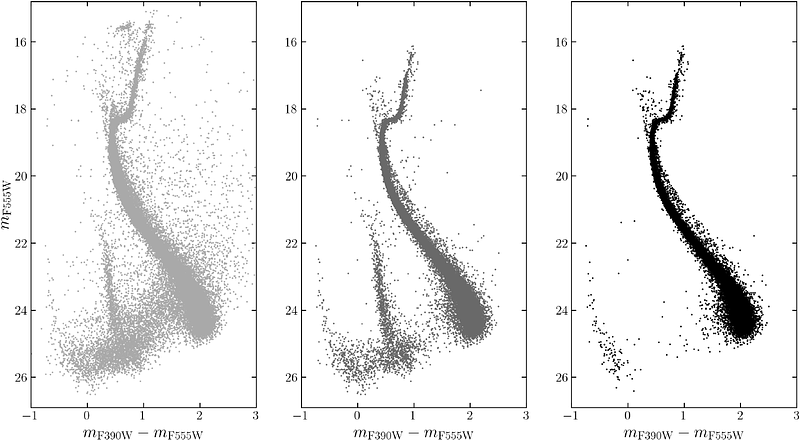Searching for exotic object companions in the dense core of NGC 362: a multi-wavelength and multi-epoch photometric analysis

Searching for exotic object companions in the dense core of NGC 362: a multi-wavelength and multi-epoch photometric analysis
Greta Ettorre, Emanuele Dalessandro, Cristina Pallanca, Mario Cadelano, Gourav Kumawat, Craig O. Heinke, Sebastian Kamann, Mattia Libralato, Phyllis M. Lugger, Haldan N. Cohn, Stefan Dreizler
AbstractThe dense cores of globular clusters (GCs) are efficient environments for the production of exotic stellar populations, including millisecond pulsars (MSPs), low-mass X-ray binaries (LMXBs) and cataclysmic variables (CVs). Most of these objects likely form through two- and three-body interactions and are useful tracers of the cluster's dynamical evolution. In this work we explore the exotic object population in the galactic GC NGC 362, searching for the optical counterpart of 33 X-ray sources identified within 1 arcmin from the cluster center. To this aim, we exploit a large Hubble Space Telescope (HST) data-set, obtained in eight different epochs and covering a wavelength range from near UV to the optical I band. To identify the most promising counterparts we follow a multi-step analysis, which is based on four main ingredients, namely positional coincidence, position in the colour-magnitude-diagrams (CMDs), H$\alpha$ excess and photometric variability. In addition, we complement the photometric analysis with spectroscopic information coming from the analysis of MUSE radial velocity (RV) curves. Thanks to this multi-diagnostic approach, we are able to identify 28 high-confidence optical counterparts, including several candidate MSPs, active binaries (ABs) and CVs. The most intriguing counterparts include a candidate black widow (BW) system, an eclipsing binary blue straggler, and a system in outburst, potentially representing either a LMXB or a nova eruption from a CV. The candidate MSPs proposed in this work will contribute to ongoing radio analyses with MeerKAT for the identification and detailed study of MSPs in NGC 362.